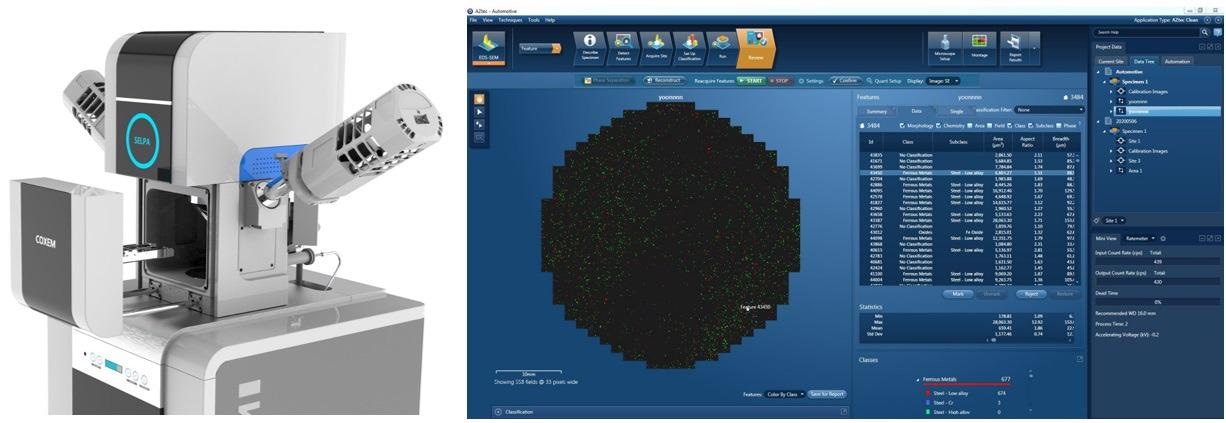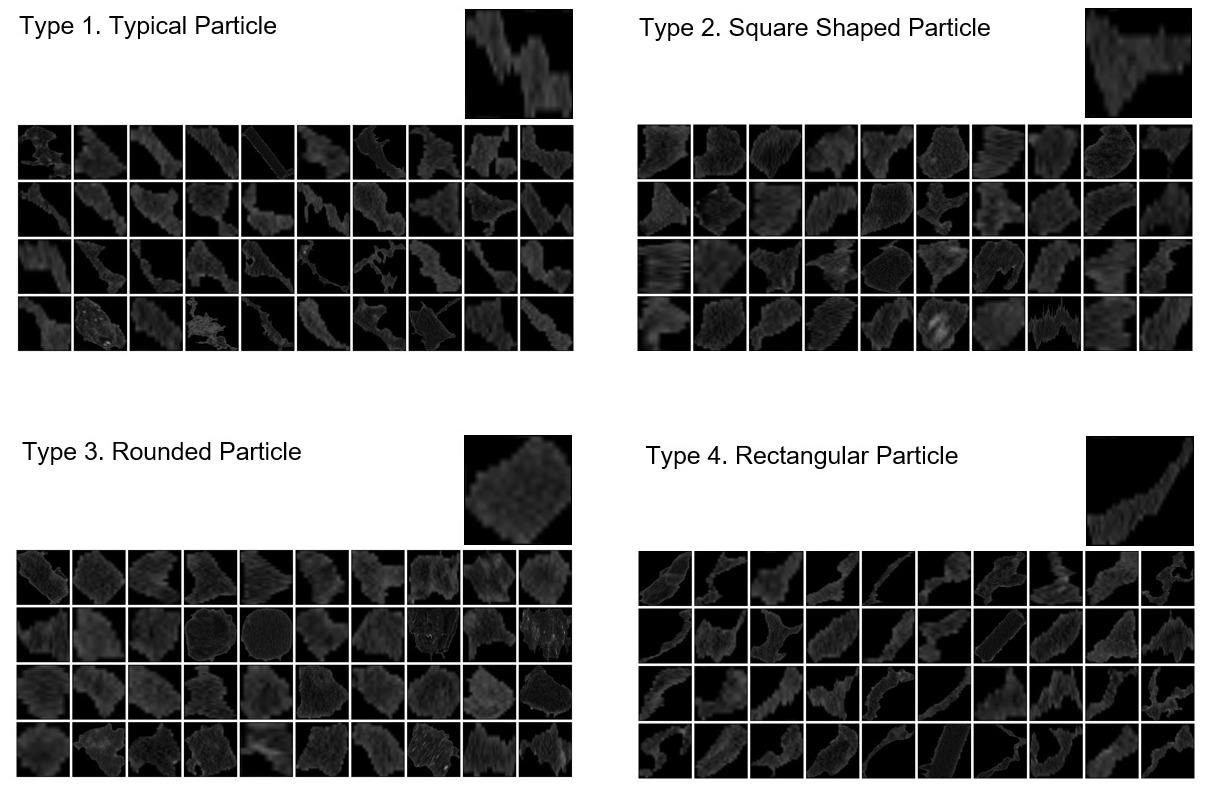Using SELPA (Scanning ELectron microscope for Particle Analysis) produced by COXEM and Oxford AZtec software makes it possible to automatically analyze large areas of fine particles utilizing an ISO 16232 standard filter. Particle analysis classifies both morphology (shape) and chemistry to classify particles, allowing the user to determine the origin of the particle as well as a possible influence on the sample. However, when new, unexpected particles are detected, determining their origin can be difficult, and a thorough understanding of electron microscopy and its associated process is often required.

Image Credit: COXEM Co. Ltd.
COXEM’s solution to this problem was to develop an artificial intelligence program which arranges the composition ratio (chemistry) or morphology of fine particles in multi-dimensional space and then automatically groups particles containing similar chemical composition and/or morphology. Through the use of a Neural Network the AI program then “learns” the composition or shape of the unknown particle and can help to determine the origin without the help of experts. This allows us to automatically group similar particles based on size, shape, or chemistry.
The figures below show the result of the classification by morphology of fine particles by experts establishing classification standards, and learning data based on these standards implemented on the Neural Network using learned artificial intelligence. The data show that this method makes it possible to automatically analyze the morphology just as if the data had been analyzed by human experts.

Image Credit: COXEM Co. Ltd.

This information has been sourced, reviewed and adapted from materials provided by COXEM Co. Ltd.
For more information on this source, please visit COXEM Co. Ltd.